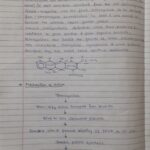The nervous system is a highly complex and intricate system that is responsible for regulating and coordinating various body functions and responses. It is comprised of two main parts – the central nervous system (CNS) and the peripheral nervous system (PNS).
The central nervous system consists of the brain and spinal cord, which are in charge of processing and interpreting information from sensory organs and responding to them accordingly. It is responsible for regulating consciousness, cognition, movement, and sensation, among many other essential functions.
The peripheral nervous system is divided into two subcategories – the somatic nervous system and the autonomic nervous system. The somatic nervous system consists of nerves that control voluntary movements, such as skeletal muscle movement, while the autonomic nervous system regulates involuntary functions such as heart rate, breathing, digestion, and glandular secretion.
Within the autonomic system, there are also two primary divisions: the sympathetic nervous system and the parasympathetic nervous system. The sympathetic nervous system is responsible for the body’s “fight or flight” response, which allows us to respond quickly to danger or stress, while the parasympathetic nervous system promotes the body’s “rest and digest” response, producing a calming effect that promotes rest and recovery.
Overall, the nervous system plays a vital role in the body’s ability to interact with the environment, regulate internal functions, and ensure survival. It is a complex system that involves an intricate network of neurons, neurotransmitters, and hormonal pathways that work together to coordinate and control the body’s many functions.










